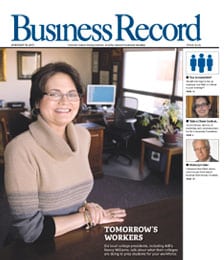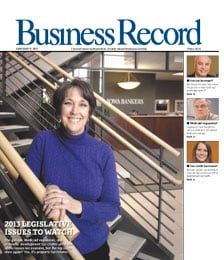‘Daunting, challenging’ year lies ahead

.floatimg-left-hort { float:left; } .floatimg-left-caption-hort { float:left; margin-bottom:10px; width:300px; margin-right:10px; clear:left;} .floatimg-left-vert { float:left; margin-top:10px; margin-right:15px; width:200px;} .floatimg-left-caption-vert { float:left; margin-right:10px; margin-bottom:10px; font-size: 12px; width:200px;} .floatimg-right-hort { float:right; margin-top:10px; margin-left:10px; margin-bottom:10px; width: 300px;} .floatimg-right-caption-hort { float:left; margin-right:10px; margin-bottom:10px; width: 300px; font-size: 12px; } .floatimg-right-vert { float:right; margin-top:10px; margin-left:10px; margin-bottom:10px; width: 200px;} .floatimg-right-caption-vert { float:left; margin-right:10px; margin-bottom:10px; width: 200px; font-size: 12px; } .floatimgright-sidebar { float:right; margin-top:10px; margin-left:10px; margin-bottom:10px; width: 200px; border-top-style: double; border-top-color: black; border-bottom-style: double; border-bottom-color: black;} .floatimgright-sidebar p { line-height: 115%; text-indent: 10px; } .floatimgright-sidebar h4 { font-variant:small-caps; } .pullquote { float:right; margin-top:10px; margin-left:10px; margin-bottom:10px; width: 150px; background: url(http://www.dmbusinessdaily.com/DAILY/editorial/extras/closequote.gif) no-repeat bottom right !important ; line-height: 150%; font-size: 125%; border-top: 1px solid; border-bottom: 1px solid;} .floatvidleft { float:left; margin-bottom:10px; width:325px; margin-right:10px; clear:left;} .floatvidright { float:right; margin-bottom:10px; width:325px; margin-right:10px; clear:left;}
A year ago, not many people foresaw the economic catastrophe that would unfold in 2008. There was a lot of caution and a few predictions of a recession, but the following 12 months brought an unraveling like no one had ever seen.
This time around, people are plenty wary.
“It’s going to be daunting and challenging,” Iowa Sen. Mike Gronstal said at a public panel meeting this month, speaking of the upcoming legislative session. “We’re going to have to struggle through our budget choices.” Gronstal, the Senate majority leader, predicted that education will avoid drastic cuts and also vowed, “We won’t dump our problems back on local government.”
Iowa Senate Minority Leader Paul McKinley said, “We expect the Iowa economy will be extremely stressed, so let’s not erect barriers to job creation, like gutting the right-to-work law.”
Here’s more detail on what to expect from the Legislature:
Legislative agenda
• Budget: Balancing the budget will likely be the issue that clouds the 2009 state legislative session. Already, Gov. Chet Culver has announced a 1.5 percent reduction in state spending to cover a projected shortfall in tax revenues. Gronstal said it will be tough for any group to ask for money this year, because it means it will have to come from another group as state revenues remain stagnant.
“It’s going to be at least the most difficult budget year I have ever experienced,” said Kraig Paulsen, the House of Representatives minority leader, at the Greater Des Moines Partnership’s legislative luncheon this month.
Paulsen and McKinley blamed the state’s budget problems less on natural disasters and an economic downturn and more on “runaway spending” as the Democrat-controlled Legislature boosted teachers’ pay and implemented other programs that increased spending during the past couple of years. Gronstal defended the spending increases and said that Iowa is still in relatively good shape, with the largest reserve fund in its history and its position as a net fuel exporter.
• Commercial property taxes: Though commercial property tax relief remains a topic of heated discussion among business leaders and state politicians, major property tax reform is unlikely this legislative session.
The Legislative Property Tax Study Committee is expected to release a report with recommendations for reform before the 2009 session. Iowa Taxpayers Association President Edward Wallace, an advisory member on the committee, said the report would likely suggest looking at more diverse revenue streams. Jay Byers, the Partnership’s senior vice president for government relations and public policy, said there could be some discussion on whether to allow local communities to utilize alternative revenue streams based on the report, but “whether or not we see a major overhaul of the system may be somewhat unlikely this year.”
• Partnership priorities: The Partnership released six main agenda items for this legislative session focused on boosting economic development and continuing many of its efforts of the past few years. They are to promote entrepreneurship by increasing funding for regional business accelerators and extending “angel investor” tax credits; raise the cap on Historic Property Rehabilitation Tax Credits; provide commercial and industrial property tax relief; improve Iowa’s education system to better meet the needs of Iowa’s economy; support public policy initiatives that work toward improving the financial literacy of all Iowans; and create wellness tax credits for small businesses that implement wellness and prevention programs.
Central Iowa issues
It’s likely that Central Iowa construction activity will continue to slow. “Right now, our plans are on hold,” said Bill Knapp, chairman emeritus of Knapp Properties Inc. “We’re not doing any speculating now.” The company he founded owns large tracts of prime development ground at the edges of Greater Des Moines, but economic uncertainty tends to keep bulldozers silent.
“This market has got to get stabilized so you at least know there’s a floor,” Knapp said. “Once we know that, we can start planning. We’re looking at a three-year turnaround. It will gradually start with the kind of money the government is putting into the financial market and work programs that will probably be started; when they do that, things will start back.”
As for the rest of the Central Iowa economic climate, Knapp said: “I think an awful lot of small businesses are just hanging on by a thread; they can’t borrow money and can’t expand. It seems to me we still have not reached the bottom.
“Another thing that could hit us is the credit card debt. We’re paying the price for good times; we had a false economy.”
• Retail climate: Retailers especially could take a hit next year, predicted Iowa State University Extension economist Meghan O’Brien.
“I think it will be a challenging year for retailers, and I think we’ll see a lot of changes in the structure and the distribution of retail,” she said, especially from mid-January through February, when companies announce their fourth-quarter results. Discount retailers and smaller stores that fill a niche in the market will likely fare better than large apparel chains, such as Gap Inc., Limited Brands Inc. and J.Crew Group Inc., which tend to appeal to the same consumers, she said. As a result, speculative retail buildings built in suburban communities will likely sit empty, and vacancy rates at malls and other shopping centers could increase as the overbuilt market in Central Iowa evens out. The influx in available retail space will likely drive rents down and may force some building owners to renegotiate contracts with tenants to keep them, she said.
“The first half of ’09 is going to be really indicative of who is going to be able to stick around,” O’Brien said.
• Downtown Des Moines: Some important projects are under way in the heart of Des Moines, and Matt Anderson, the city’s economic development administrator, said, “One of the things we’re most excited about is the Pappajohn Sculpture Garden and any new development that might encourage.”
Wellmark Blue Cross and Blue Shield’s new headquarters is going up nearby, and a couple of residential projects have been proposed for the area; Hubbell Realty Co. plans to remodel the former home of Mitchell Transmission, and Jack Hatch wants to build just up Locust Street.
Anderson doesn’t expect much activity in office space construction downtown, but noted: “We’re already seeing a lot of apartments that are on the drawing board or have been approved. That area is going to stay hot.”
The state outlook
A University of Iowa economic forecaster expects that the slowdown won’t be as bad for the state as for the nation.
“The numbers won’t be as good in 2009 as they were in 2008 or 2007, but it’s not as bad as some are making it out to be,” said John Geweke, director of the Institute for Economic Research at the Henry B. Tippie College of Business.
In his December report, Geweke forecast a largely stagnant economy for Iowa over the next two years. He expects the state’s gross domestic product (GDP) to decline by 0.4 percent, compared with a 1.4 percent growth forecast in 2008.
Personal income should remain steady or increase slightly because of the run-up in land values, Geweke said. And though commodity prices are down, many farmers are still benefiting from contracts that locked in higher prices, he said.
National turnaround?
A combination of factors, including the ongoing impact of what could amount to $2 trillion in government stimulus payments, pent-up consumer demand and returning consumer confidence will finally lead to a turnaround in 2009, said Jim Paulsen, chief investment strategist of Wells Capital Management, in a recent conference call among Wells Fargo & Co. economists and reporters.
“It’s like you’re at a cookout and you’re trying to get your charcoal going and you keep squirting on lighter fluid and all of a sudden it goes ‘poof!'” he said.
An economic recovery will be led by sectors that aren’t impaired, but are merely frozen for lack of confidence, Paulsen said. “The person who was going to buy a car this summer but waited is going to have to buy a car next summer,” he said.
Scott Anderson, a senior economist for Wells Fargo, predicted that the housing sector will lead the recovery. “One bright note is that the sector that led the economy into this morass is about to turn the corner, perhaps as soon as this summer, and will start to lead us out,” he said.
Anderson predicted that the U.S. GDP will decline in the first two quarters of 2009 and that the unemployment rate will increase to 8.8 percent by the end of 2009, but that the economy should begin to expand again in the third quarter.
Bob Baur, chief global economist for Principal Financial Group Inc., agreed: “We’re hoping right now that the recession would wind its way down by June, July, August.”
Until November, the Federal Reserve’s attempts to pump more liquidity into the markets had been “sterilized” by sales of Treasury securities, he said, but now the Fed has managed to ease monetary policy so that it’s expanding the money supply. “The result is very clear,” Baur said. “Mortgage rates are now down significantly, to 5 percent or less. And we get anecdotal reports that in Des Moines, some people with good credit can get mortgages at 4.5 percent.”
Iowa’s strong positions in both agriculture and the financial services industry should help it recover quickly from the recession, he said.
“Both of them are benefiting from globalization over the past 20 to 30 years,” he said. “We believe in the growth rate of emerging markets. They know how you and I live; they’ve gotten a taste of that middle-class life. They’re going to need commodities and financial services.”








